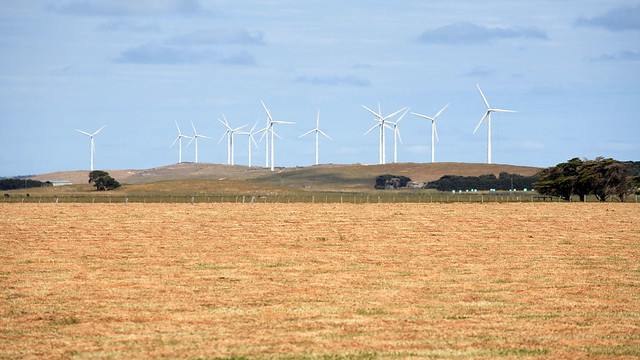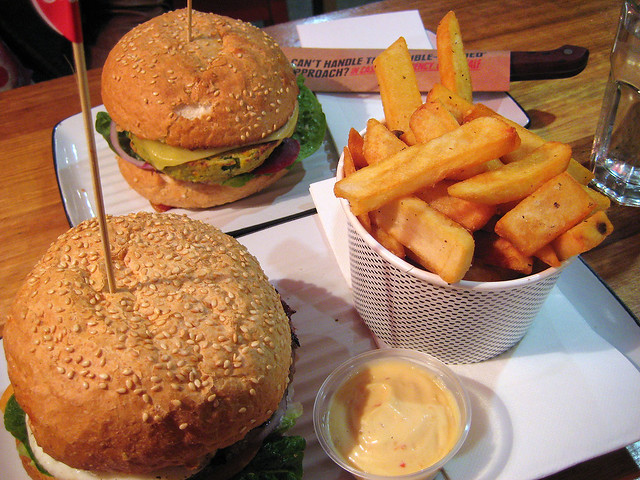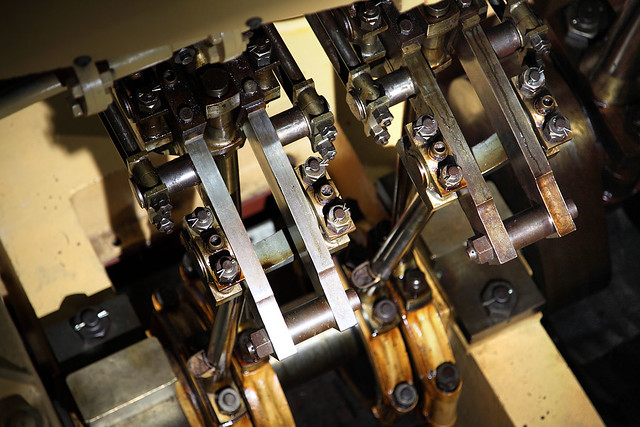

| Archive Blog Cast Forum RSS Books! Poll Results About Search Fan Art Podcast More Stuff Random |
|
Classic comic reruns every day
|
1 {photo of boys walking into a strong wind}
1 Caption: Use the force
|
First (1) | Previous (3355) | Next (3357) || Latest Rerun (2886) |
Latest New (5380) First 5 | Previous 5 | Next 5 | Latest 5 Annotations theme: First | Previous | Next | Latest || First 5 | Previous 5 | Next 5 | Latest 5 This strip's permanent URL: http://www.irregularwebcomic.net/3356.html
Annotations off: turn on
Annotations on: turn off
|
In a few weeks I am doing another one of my primary school visits under the CSIRO Scientists in Schools program. The science coordinator at the school has informed me that this term the students, across all the years from kindergarten to year 6, are learning about various aspects of "pushes and pulls". To anyone who's done high school physics, this translates to forces.
When I did mechanics at school, the concepts were built up on a progressive way, beginning with motion. We learnt about uniform motion, then acceleration, and did some problems involving the equations of motion. Then mass was introduced, and we learnt that to accelerate a given mass m at a certain acceleration a, you need what is called a force F, given by the product F = ma. This equation is the usual expression of Isaac Newton's second law of motion.
Once we had force, the physical concept of work was defined as "a force exerted over a distance". This was getting a bit more abstract and I remember struggling to get a good grip on exactly what work was.[1] We were given examples such as: if a person pushes a car with a force of 500 newtons (newtons being the unit of force), and moves the car a total of 10 metres, then the amount of work done by the person is 500×10 = 5000 newton metres.
 Result of exerting a force on a car. |
Another example: acceleration due to gravity equals (approximately) 9.8 metres per second per second. By Newton's second law, gravity therefore exerts a downwards force of 9.8 newtons on a mass of 1 kilogram. To lift it requires overcoming that amount of force, so if you lift it 1 metre, then you have done 9.8 newton metres of work.
Now we hit the really tricky part: energy. Energy was defined as "the ability to do work". To do 5000 newton metres of work, you have to spend 5000 newton metres of energy. The units of work and energy are the same, but in the context of energy we now give the clumsy unit name of "newton metres" a new name: joules. So you can say that to do 9.8 newton metres of work requires expending 9.8 joules of energy. (Equivalently you could also say that to do 9.8 joules of work requires expending 9.8 joules of energy - it's the same thing, really.)
Okay, but what is energy exactly? Can you hold it in your hand, can you see it? Can you feel it? Can we experience energy in the same way that we can experience mass, say, or speed? Is it something we can relate to through our every day experience and our senses?
 Windmills collect energy. Can you see the energy? |
Force we can feel. If someone pushes you, or indeed pulls you, that's a force. Pick up a heavy object and you can feel the force produced by gravity pulling it back down.
Work is harder to get a handle on, but you can if you try. Work is the exertion of force over a distance. As an example, when you run you exert a force. You actually exert a backwards force on the ground with your feet, and the reaction force of the ground (Newton's third law of motion, which I haven't explained yet) pushes you forwards. Nonetheless, you're exerting a force in order to keep moving. Exert that running force over a short distance. That's a small amount of work. Run over a longer distance, and that's a greater amount of work. The amount of work you do when running is related to the distance you run.
Okay. Now, how do you feel after running a very short distance? Compare that to how you feel after running a long distance. You do more work over a longer distance, and you feel more exhausted. That's what work feels like. Doing work tires you out.
The reason for this is that doing work requires energy, and that energy has to come from somewhere. Human beings, like other animals, get their energy from food. If you do lots of work (still in the physical sense, moving objects or yourself around, as opposed to just sitting at a desk), then you need more food than if you don't.
 That'll give you plenty of energy! |
Food supplies energy to us in the form of chemical bonds between atoms.[2] The cells in our bodies carry out chemical reactions in which the bonds of molecules obtained from our food are broken. An example is a sugar molecule, which is broken apart and combined with oxygen to form water and carbon dioxide. The oxygen comes from our lungs and we breathe out the resulting carbon dioxide. This reaction releases energy which can then be used by muscle cells to flex our muscles, providing the force necessary to move objects around. The more physical work you do, the more food you need to eat to supply the necessary energy.
So energy can exist in a stored state, locked away in atomic bonds. I've mentioned this before, and we call it chemical potential energy. Where does that energy come from? Well, sugars and other carbohydrates which supply much of the energy content of our food are made by plants. Plants combine water and carbon dioxide to make carbohydrates, which they use for building their bodies. Breaking apart carbohydrates releases energy, so to make them in the first place you need to add some energy. Plants get this added energy from sunlight.
Plants collect sunlight in their leaves. The green colour is a special substance called chlorophyll, which captures the sunlight energy and uses it to assemble carbohydrates. These carbohydrates can then travel through the sap of the plant to areas where the plant is growing, where they get assembled into new stems and leaves and maybe flowers and seeds. Some of the energy is used to subtly do some work against gravity too, lifting up the molecules necessary to grow stalks at the top, so the plant gets taller.
 A leaf collects sunlight and turns it into food. |
So sunlight is a form of energy too. It comes from the sun and travels across the huge distance of space to Earth. I've talked about this before - sunlight is an electromagnetic wave, a series of wiggling electric and magnetic fields travelling through space. It's the wiggling which carries the energy. How does the sun produce this energy?
Again, it doesn't come from nowhere. The sun merely converts energy from another form into the electromagnetic waves we see as light. The energy exists in the sun as mass. Nuclear reactions enabled by the sun's huge gravity and pressure combine hydrogen nuclei into helium nuclei. The resulting helium nuclei have a little bit less mass than the hydrogen nuclei used to make them, and that mass is converted into electromagnetic energy in the form of gamma rays. The gamma rays collide with the densely packed particles inside the sun, heating them up.
Heat, as we've seen before, is another form of energy. It is essentially the energy of molecules, atoms, or subatomic particles wiggling around. (It's amazing how much of the energy in our universe is just things wiggling around.) This heat travels to the surface of the sun. Which radiates the energy away into space in the form of electromagnetic waves, including the light that shines on our plants.
I began intending to talk about force, but have ended up talking about energy. There's a reason for this. Energy has a more tangible feel to it than force does. There are lots of forms of energy, and we are familiar with many of them: light, heat, sound, electricity, movement (kinetic energy) - even mass we have a good intuitive feel for, even if we don't know the details of how mass is equivalent to energy. So you can talk about energy in everyday terms quite easily. Force is a little bit more abstract. It's a push or a pull... But what about those things exactly is it?
Another way to think of force is that a force is energy's way of moving stuff around. (I'm not claiming this is any better, but it's a different way of thinking about it, which might be useful.) Chemical energy in the fuel of an engine gets converted to heat by burning, then that heat expands gases which exert a force on pistons, converting the energy to movement. (Actually, if you go back a step, the chemical energy released during the burning reaction exerts a force on the fuel molecules, pushing them around faster, which we observe macroscopically as heat.) Gravitational potential energy exerts a force on an object in mid-air, making it fall. The energy stored in a watch spring exerts a force on the gears of the watch movement, moving around the hands of time. Energy stored in a battery cell is converted to electric current, which is the motion of electrons, which can be converted into mechanical motion by an electric motor.
 Pistons of a steam engine convert heat into motion. |
This is not the whole story of forces. Some forces do indeed push stuff around, imparting motion (or slowing motion down, which is just as valid an application of force, just in the opposite direction to the way something is already moving). But many forces don't do any moving at all. We call such forces static forces, and they are all around us. Just because the ground beneath your feet stops you falling downwards doesn't mean gravity isn't still exerting a force on your body's mass. The force exerted by gravity is exactly the same if you are standing up as if you are jumping off a fence. The difference is that when you're on the ground, the ground exerts a force which stops you sinking into it.
This is the reaction force, which comes in in Newton's third law of motion: For each action there is an equal and opposite reaction. Gravity doesn't just pull you towards the Earth, it pulls you and the Earth towards each other, with equal force on each. Why doesn't the Earth move up towards you as you fall towards it, then? Actually, it does! The difference is that the Earth has a huge amount more mass than you and - remembering Newton's second law - force equals mass times acceleration. For the same force and a much bigger mass, the Earth has to have a much smaller acceleration. So, doing the sums, when a typical person falls one metre to the ground, the Earth actually rises about 10-23 metres towards the person. This distance is about a billionth of the diameter of a proton, so we never notice it.
 A wall exerting a reaction force on two men. |
Static forces exist everywhere where objects stand up against gravity. Engineers have to consider all of the static forces in buildings and bridges, to make sure the materials are strong enough to cope with them. The mass of a bridge and the vehicles crossing it exert forces because of gravity, which push through the trusses and stays and pylons and other structural elements of the bridge, to exert the force on the ground. The ground provides the reaction force to hold the structure up, and that reaction is distributed back through all the bridge elements to balance everything out, so nothing moves. (Well, bridges will flex a little bit when loaded with additional mass, but hopefully they won't move catastrophically.)
I think I've returned to my original point, which is how to think about forces. Rather than building them up from the mechanics of motion, you can approach from the other side, and think about force as the tool energy uses to move things around. Force is the action of potential energy converting into kinetic energy. That's another way of looking at it, which might provide some insight into how the mechanical world around us works.
 Static forces holding up a bridge. |
[2] Way back when I started this series of weekly annotations[3], I said it would be good to start at the very beginning. If you want to explain everything, then there are certain things that you need to explain first, and the beginning of explaining everything is to know that matter is made of atoms. This one simple fact underlies so much of how our world behaves that it is essential to know before you can truly understand much of anything else about the physical universe.
[3] I still think of these weekly ramblings as "annotations" rather than some other word such as "essays", even though they are no longer annotating a comic strip. I like to think of them as "annotations on the world".
|
LEGO® is a registered trademark of the LEGO Group of companies,
which does not sponsor, authorise, or endorse this site. This material is presented in accordance with the LEGO® Fair Play Guidelines. |